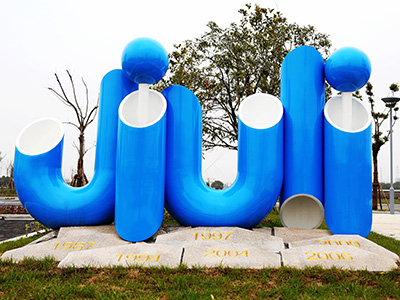According to statistics, about 60% of the world's nickel production is used in the production of stainless steel. Nickel is a relatively scarce and expensive element, especially during the war, because nickel is also a strategic material, so the supply of nickel is more limited; In peacetime, the cost and price of stainless steel often fluctuate with the price of nickel. Therefore, saving nickel in steel has always been an important research direction in the development of stainless steel. Both manganese and nitrogen are austenite forming elements, especially nitrogen, which is about 30 times more capable of forming austenite in steel than nickel. Manganese form austenite capacity while the weaker, only about half of the nickel, but stable manganese austenitic ability is very strong, but also can significantly increase the nitrogen solubility in the steel, which can increase the amount of nitrogen in the steel, austenitic organization, so in order to obtain the combined with manganese, nitrogen generation of nickel was the best match, become early can not only obtain austenite structure but also save cr-ni austenitic stainless steel main alloying of nickel.
Since the 1930s, Germany and the United States began to study the Cr-Mn (N) austenitic stainless steel with Mn and Ni instead of Ni, and achieved results in the 1940s. Cr-Mn (N) series (AISI 200 series) austenitic stainless steel was developed to replace the 18-8 (304) Cr-Ni austenitic stainless steel as the main target. It is also the only type of steel specifically developed for nickel saving. However, after half a century of further research and practice, it has been shown that although manganese and nitrogen composite can replace nickel from the structure (forming austenite), it cannot completely replace nickel from the corrosion resistance and other properties, and manganese has a harmful effect on the corrosion resistance of stainless steel. So it is generally believed that the existing with manganese, nitrogen generation some of nickel chromium manganese austenitic stainless steel grades, such as AISI 200 steel) of its hope instead of line cr-ni austenitic stainless steel 18-8 (304), etc.] [for example, even though they are with face-centered cubic structure of austenitic organization, but on the performance of the two are quite different, although the former is a kind of high strength, corrosion resistance, formability and after welding performance such as the category of stainless steel are relatively low. Since 1970, VOD, AOD refining outside the furnace, such as represented by the development of modern stainless steel metallurgy, processing technology and the wide application of modern without low nickel, nickel ferrite stainless steel and nickel, few low nickel (Ni) (1% ~ 4% of the rapid development of the modern alpha + gamma duplex stainless steel production and application of AISI 200 stainless steel formed the enormous challenge, and has gradually become the mainstream and development direction of nickel stainless steel.
However, due to the comprehensiveness of excellent comprehensive properties of Cr-Ni austenitic stainless steels and the universality of application scope, the various kinds of existing nickel stainless steels have their own characteristics but also have their comprehensive properties are not comprehensive (limited). Therefore, they can only replace part of Cr-Ni austenitic stainless steels within the applicable range of their characteristics, but it is impossible to replace Cr-Ni austenitic stainless steels completely or even completely. Recently, due to the joined the high nitrogen content in steel process, the progress of technology and equipment, not only at home and abroad in the exploitation of high nitrogen strength and ultra-high strength of chromium manganese austenitic stainless steel, and to not only borrow to join in steel manganese nitrogen and low development of manganese, nickel, high nitrogen and manganese, nickel, high nitrogen austenitic stainless steel research has achieved remarkable progress, caused the increasingly widespread attention at home and abroad.


















